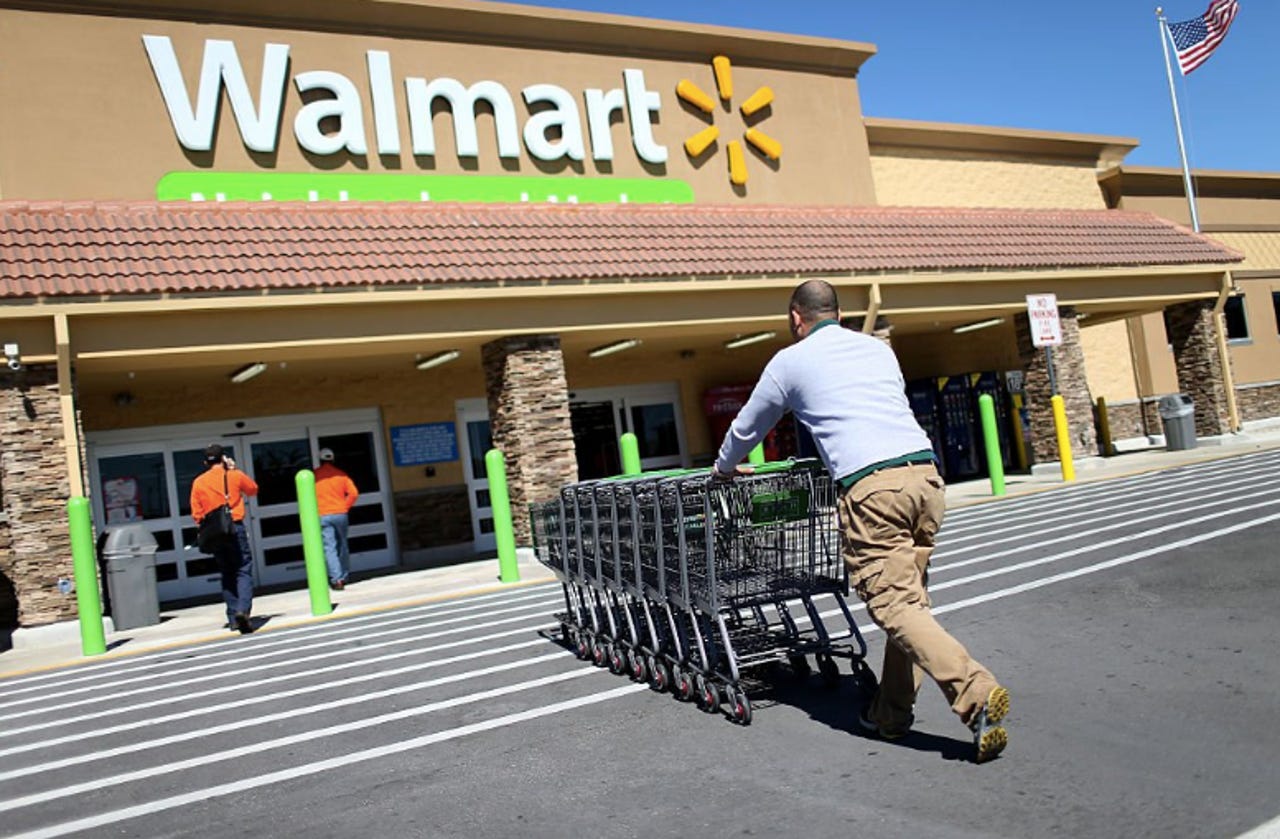Walmart says 'basket economics' strategy from Jet acquisition will fuel online growth


Image: Walmart
Walmart said Thursday it plans to reduce the number of new store openings and shift more resources into building up its e-commerce business and digital technology stack.
Featured
Part of the strategy shift stems from Walmart's $3 billion buyout of online retailer Jet.com this past August. During a meeting with Wall Street analysts, Walmart CEO Doug McMillon and Jet.com founder Marc Lore outlined how they plan to reshape Walmart's position as an e-commerce brand while maintaining the existing strengths of each company.
For Walmart, the strong point is its size and scale. There are currently more than 4,500 Walmart stores in the US, and each of those stores can be used in some capacity to service online orders.
For Jet, the big money maker is what it refers to as "basket economics," which is basically an e-commerce ops strategy that stresses logistics and supply chain to reduce costs. The idea is to figure out the optimal way to ship a basket of goods to a consumer and to make that process transparent to the consumer as they're shopping.
"So in real time we show the savings of buying one product over another," Lore said. "The idea is to encourage consumers to buy things that will ship together and in close proximity to where they live. And as a result, consumers are building bigger baskets."
And that's the ticket right there -- bigger baskets. Walmart will apply Jet's 'basket economics" strategy to convince shoppers that big baskets are more efficient and akin to the digital version of supercenter shopping. And it will use its massive brick-and-mortar infrastructure to make all the pieces fit together.
"The plan is to implement Jet philosophies across Walmart to grow business faster," McMillon said.
Beyond basket size, McMillon also hopes Jet will attract a younger generation of brands and shoppers both in-store and online. The Jet brand indexes more strongly with Millennials than the Walmart brand does, McMillon said. Therefore Jet will focus on attracting the urban, Millennial customer and the youth-oriented brands that don't want to sell on marketplaces.
"But we are more alike than people would guess, even though Jet is younger and cooler," McMillon quipped.
Looking ahead, Walmart expects e-commerce sales to grow significantly in the second half of the 2018 fiscal year, jumping somewhere between 20 percent to 30 percent above previous measures.
Last quarter Walmart said its e-commerce sales increased 11.8 percent primarily due to the continued rollout of its online grocery option and growth of pick-up in stores and clubs. It marked the first time in nine quarters that the retailer's online sales growth increased quarter-over-quarter.
In terms of infrastructure, Walmart said it plans to add just 35 new supercenters (about half as many as last fiscal year) and 20 new neighborhood markets to its fleet of stores. This is a noteworthy point, because for the past four years, the bulk of Walmart's growth has come from new stores, said CFO Brett Biggs.
Instead of opening additional stores, Walmart will remodel around 500 current stores and bring just as many on board as new online grocery locations.
Still, Walmart said its fiscal 2018 earnings will be flat compared with fiscal 2017, with earnings in the range of $4.29 to $4.49 per share.
"As retail changes, and Walmart changes with it, we can drive strong, efficient growth by continuing tooperate with discipline," McMillon said in a blog post.
"So we will be thoughtful about expense control and be more productive across the business. We'll win the basket business in stores and in e-commerce. And one other benefit from taking this approach is that shipping larger baskets is more sustainable from an environmental point of view."